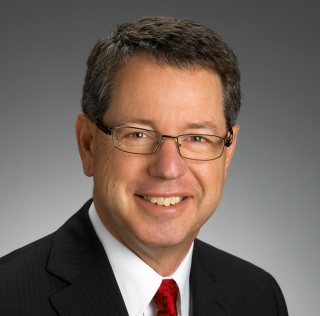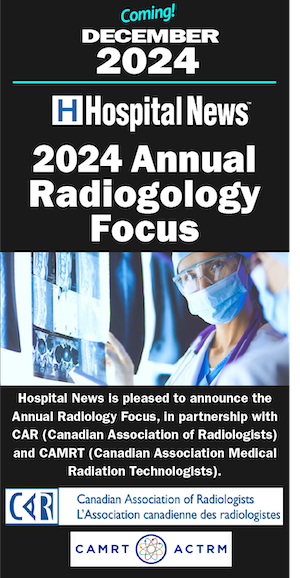In early 2011, St. Mary’s General Hospital in Kitchener began a journey of continuous quality improvement using Lean methodologies – one of the first Ontario hospitals to do so.
In launching Lean, we set an ambitious goal of identifying and completing 1,000 improvements throughout the hospital in our first year. We exceeded that goal, an impressive achievement given that the Lean approach requires significant culture change and staff support.
As President, I was proud that our staff had embraced Lean. They felt empowered at their daily unit huddles to identify barriers to improving performance and patient care. Together they brainstormed solutions and took on projects as part of our 1,000 Better Ways initiative.
St. Mary’s is a busy 150-bed facility with 1,200 staff, regional cardiac and thoracic surgery programs, and large day surgery, medicine, emergency and diagnostic imaging programs. With so many competing demands on people’s time, it can be difficult to sustain such gains.
MORE: OSLER’S JOURNEY TOWARD SERVICE EXCELLENCE
In year two of our Lean journey, we started to lose some steam. We were challenged with maintaining a structure for keeping us focused on what was important in our organization. To help keep us on track and see the gains I believe are possible through Lean, in September of 2013 we entered into a three-year partnership with KPMG to help us embed the Lean Management System (LMS) practices across the organization in a phased approach with intensive training for staff and managers.
One thing we have learned is to streamline the number of projects throughout the hospital and to focus on those that align with our organizational goals. Lean methodologies provide a defined process, driven largely by data, to determine a problem, trial potential solutions and measure their success. All of this work takes time.
Significant progress has been made toward our goals for 2013-14. Here are just a few of our recent accomplishments.
We reduced staff injuries by 25 per cent by identifying root causes of staff injury through unit huddles and data analysis. In 2014-15 we are aiming for a further 25 per cent reduction in staff injuries.
MORE: Delivering the future – Bruyère is there
We have reduced length of stay for admitted patients in the emergency department from more than 20 hours to about 13 hours, well on our way to our targeted length of stay of eight hours or less. Since many patients who are admitted through the department are transferred to our general medicine unit, we looked at ways to improve patient flow on that unit. We implemented a simple but effective strategy of visual cues to improve discharge planning by better tracking discharge readiness for the unit’s patients. These patients are primarily elderly with multiple co-morbidities and can receive care from up to 12 different disciplines. These visual cues foster real-time conversations among team members, improve collaboration, and allow discharge to occur in a more timely and organized fashion.
Another exciting Lean initiative is in our Endoscopy unit. All unit staff met to map out a patient’s journey from arrival to discharge, in order to identify time spent that does not directly benefit the patient. The goal is to eliminate wasted time and reduce length of stay while ensuring safety and quality outcomes. Improvement ideas that are “quick wins” are addressed at daily huddles. Those that are more complex go to a newly formed unit leadership council and those that relate to Quality Based Procedures go to a new physician committee. Both the physician committee and leadership council meet monthly, a structure which builds in sustainability for the gains we make.
Using Lean has also helped us establish clear guidelines for corporate projects and criteria for choosing them (i.e. those that are mandatory/legislative and linked to operational goals, longer term strategy). We have established a daily two-hour “protected time zone” for managers, directors and vice-presidents to engage in structured conversations about the progress of projects and other improvement work. In this way we can continuously monitor progress, remove barriers and provide coaching to help keep work on track.
MORE: OPPORTUNITY IN THE FACE OF OVERCAPACITY
We have also reviewed the amount of time managers and staff spend on various committees with a view to significantly reducing those commitments and to free up more time for our managers and staff to participate in Lean initiatives. This will be an evolving process but my initial goal is a 25 per cent reduction in total hours spent by management in regularly occurring committees. Options to be explored to accomplish this goal include: eliminating some committees; reducing the frequency of others; reducing the length of time of meetings; and reducing the number of people who attend.
Lean implementation at St. Mary’s has been solidly backed by our board of trustees. Recently our board became one of the first in Ontario to start each monthly meeting with a board huddle. Board members from ThedaCare, a health care system in Wisconsin considered to be an American leader in Lean management, have travelled to St. Mary’s to provide coaching for our board, and the U.S. based Healthcare Value Network has recorded one of these huddles for presentation at the Lean Healthcare Summit in Los Angeles in June.
To implement Lean well can take five to 10 years. We are just beginning our third year and continue to learn how to navigate through challenges and keep teams motivated.
Success on this journey requires focus, commitment and persistence. However, the opportunities are endless to create an environment where patients, families, and caregivers are happier, safer and more engaged. They deserve no less.




